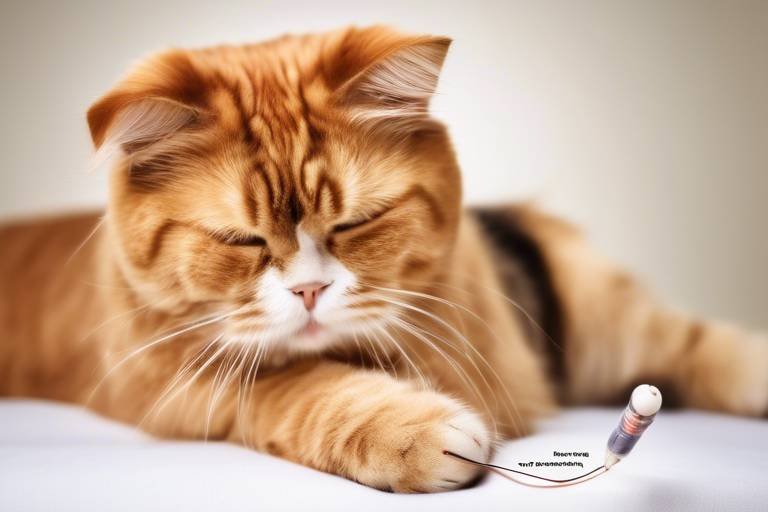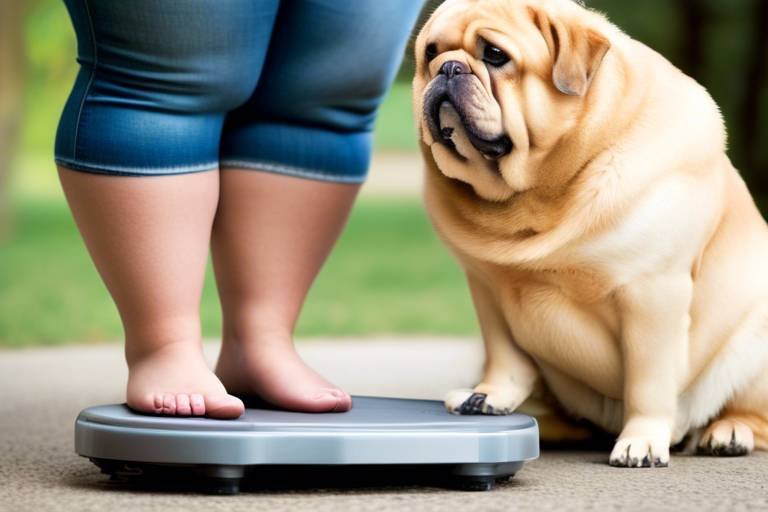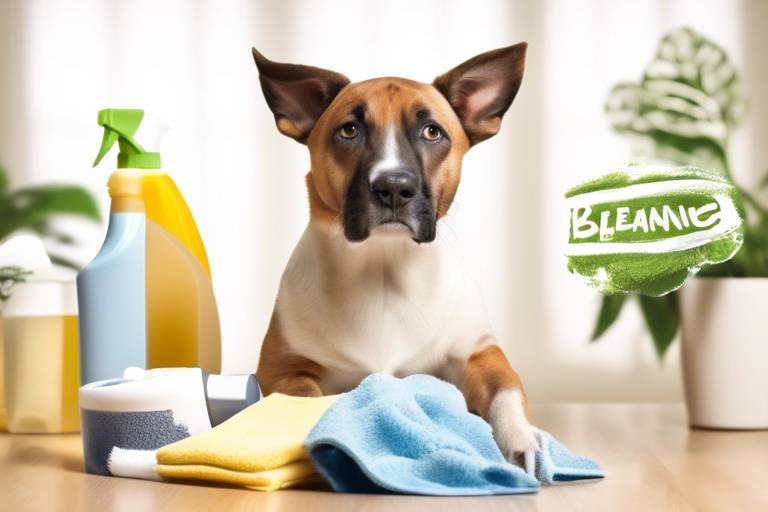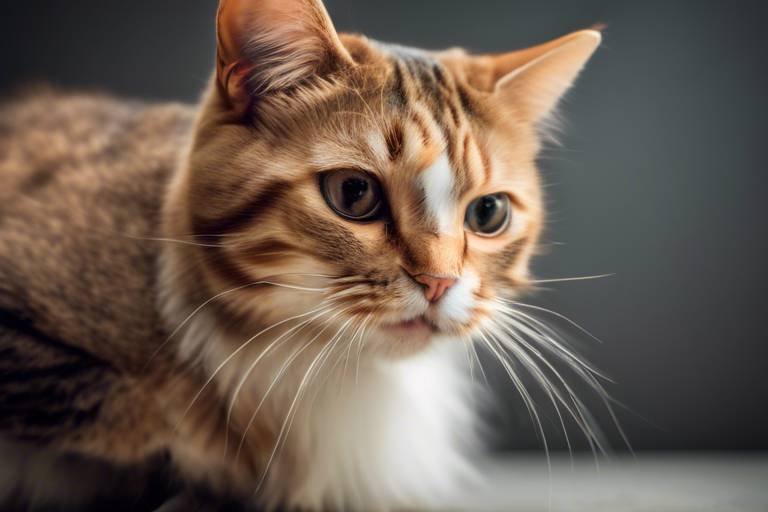The Connection Between Nutrition and Pet Longevity
When it comes to our beloved furry friends, the saying "you are what you eat" couldn't be more true. Just like humans, pets thrive on a balanced diet that provides them with the essential nutrients they need to live a long, healthy life. The connection between nutrition and longevity in pets is profound, influencing everything from their energy levels to their susceptibility to diseases. Imagine your pet as a finely tuned machine; without the right fuel, it simply won't perform at its best. In this article, we will dive deep into how proper nutrition impacts the lifespan and overall health of pets, emphasizing the importance of a balanced diet tailored to their individual needs.
A balanced diet is crucial for pets, providing essential nutrients that support their growth, energy levels, and overall health. Think of it as the foundation of a sturdy house; without a solid base, everything else can crumble. A well-rounded diet not only enhances physical health but also supports mental well-being. Pets that receive the right nutrition are often more energetic, playful, and less prone to health issues. This can significantly extend their lifespan, allowing them to be by your side for many more years. So, what does a balanced diet look like for your pet? It typically includes a mix of high-quality proteins, healthy fats, carbohydrates, vitamins, and minerals, all working together to keep your pet thriving.
Understanding essential nutrients is key to making informed dietary choices that promote longevity and vitality in our furry companions. Just like we need a variety of foods to meet our nutritional needs, pets require a diverse diet as well. The essential nutrients for pets can be categorized into several groups:
- Proteins: Crucial for muscle development and repair.
- Fats: An important energy source that aids in nutrient absorption.
- Vitamins: Support various bodily functions and boost the immune system.
- Minerals: Necessary for bone health and other vital processes.
By ensuring your pet receives a mix of these nutrients, you can help them lead a healthier, longer life.
Proteins are vital for muscle development and repair. High-quality protein sources can enhance a pet's energy levels and support healthy bodily functions, contributing to a longer life. Think of protein as the building blocks of your pet's body, essential for everything from growth to immune function. Not all proteins are created equal, though; it's important to choose high-quality sources that provide the necessary amino acids. Animal proteins, such as chicken, beef, and fish, typically offer a complete amino acid profile, while plant proteins can be complementary but may lack certain essential amino acids.
Comparing animal and plant proteins reveals their unique benefits and drawbacks. Animal proteins are generally more bioavailable, meaning pets can absorb and utilize them more effectively. On the other hand, plant proteins can be a great addition for pets with specific dietary needs or allergies. The key is to strike a balance that meets your pet's unique requirements.
Different life stages require varying protein levels; understanding these needs ensures pets receive adequate nutrition for optimal growth and health throughout their lives. Puppies and kittens, for example, require more protein for growth, while older pets may need a different balance to maintain muscle mass and overall health. Tailoring your pet's diet to their age and activity level is crucial for their longevity.
Fats are essential for energy and nutrient absorption. Healthy fats contribute to a pet's skin and coat health, enhancing their overall well-being and longevity. Think of fats as the fuel that keeps your pet's engine running smoothly. Omega-3 and Omega-6 fatty acids, found in fish oil and flaxseed, are particularly beneficial for reducing inflammation and promoting heart health.
Hydration plays a critical role in a pet's health. Just as we need water to function, pets require it to support vital bodily functions and help prevent various health issues. Dehydration can lead to serious complications, so ensuring pets drink enough water is essential for promoting longevity. Keeping a fresh bowl of water available at all times is a simple yet effective way to encourage hydration.
Recognizing the signs of dehydration in pets is crucial. Early detection can lead to timely interventions, ensuring pets maintain optimal health and longevity. Some common signs include:
- Dry gums
- Loss of skin elasticity
- Decreased energy levels
- Excessive panting
If you notice any of these signs, it's important to encourage your pet to drink more water or consult a veterinarian.
Implementing strategies to encourage pets to drink more water can significantly improve their hydration levels. Here are a few tips:
- Provide fresh water frequently.
- Use water fountains that entice pets to drink more.
- Add water or broth to their food.
By making hydration a priority, you can help your pet stay healthy and happy.
Selecting the appropriate pet food involves understanding ingredient quality and nutritional value, which are essential for supporting longevity and preventing health issues. Not all pet foods are created equal, and the right choice can make a world of difference. Look for foods that list high-quality protein sources as the first ingredient and avoid those with fillers and artificial additives.
Learning to read and interpret pet food labels empowers owners to make informed choices, ensuring their pets receive balanced nutrition tailored to their specific needs. Pay attention to the guaranteed analysis, ingredient list, and any claims made by the manufacturer. This knowledge can help you choose the best food for your furry friend.
Exploring the pros and cons of homemade and commercial diets helps pet owners determine the best feeding approach for their pets. Homemade diets can be tailored to meet specific health needs but require careful planning to ensure they are nutritionally complete. Commercial diets, on the other hand, are convenient and often formulated to provide balanced nutrition. Consider your pet's specific needs, your lifestyle, and your comfort level with preparing food when making this decision.
Q: How can I tell if my pet is getting enough nutrition?
A: Look for signs of good health, such as a shiny coat, healthy weight, and high energy levels. Regular vet check-ups can also help assess your pet's nutritional status.
Q: Is it okay to feed my pet table scraps?
A: While some table scraps can be safe, many human foods are unhealthy or toxic for pets. It's best to stick to pet-specific foods and treats.
Q: How often should I feed my pet?
A: Feeding frequency depends on your pet's age, size, and activity level. Generally, puppies and kittens require more frequent meals, while adult pets can be fed once or twice a day.
Q: Can I switch my pet's food suddenly?
A: It's best to transition to a new food gradually over a week or so to avoid digestive upset. Mix increasing amounts of the new food with the old food until fully transitioned.
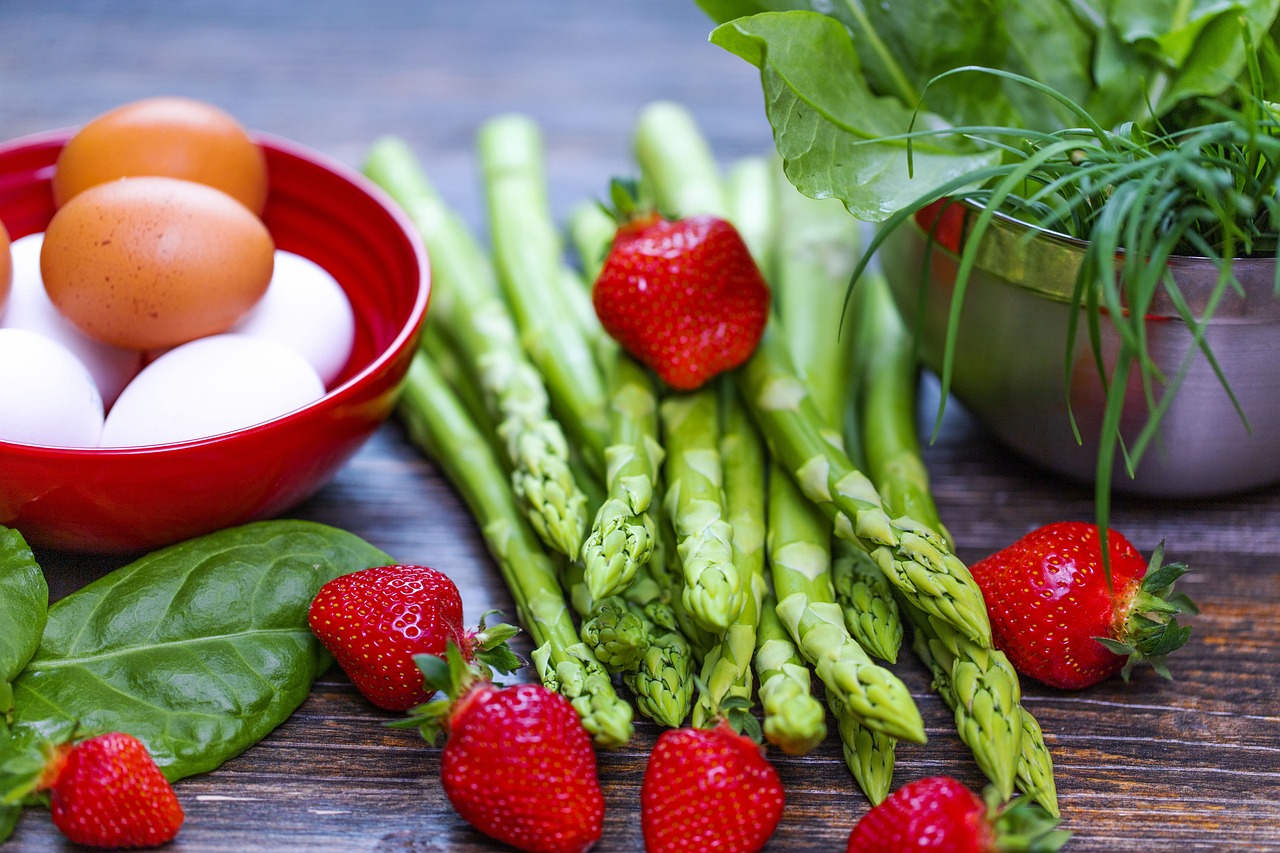
The Role of Balanced Diets
A balanced diet is not just a trendy phrase; it’s the cornerstone of your pet’s health and longevity. Just like humans, pets require a variety of nutrients to thrive, and a well-rounded diet is essential for their overall well-being. Imagine fueling your car with the right type of gasoline; it runs smoothly, lasts longer, and performs better. Similarly, when you provide your furry friend with a balanced diet, you’re setting them up for a vibrant and energetic life.
So, what does a balanced diet entail? It includes the right proportions of proteins, fats, carbohydrates, vitamins, and minerals. Each of these components plays a specific role in maintaining your pet’s health. For instance, proteins are the building blocks of life, crucial for muscle development and repair. Fats not only provide energy but also aid in the absorption of vitamins, while carbohydrates serve as a quick energy source. Vitamins and minerals, though needed in smaller amounts, are vital for various bodily functions, from bone health to immune system support.
Let’s break it down a bit more. Here’s a quick overview of the essential nutrients and their roles:
| Nutrient | Role |
|---|---|
| Proteins | Muscle growth, repair, and overall energy |
| Fats | Energy source and nutrient absorption |
| Carbohydrates | Quick energy source |
| Vitamins | Support various bodily functions |
| Minerals | Bone health, nerve function, and immune support |
When you think about it, feeding your pet is like preparing a delicious meal for a family gathering. You wouldn’t serve just one dish, right? You’d want a variety that caters to everyone’s tastes and needs. The same goes for your pet’s diet. It’s important to consider their age, breed, and activity level when choosing the right food. A puppy, for example, will have different nutritional needs compared to a senior dog. Tailoring their diet to these specific requirements ensures they get the right nutrients at every stage of their life.
Moreover, the impact of a balanced diet goes beyond just physical health. It can affect your pet’s mood and behavior too. A well-fed pet is often a happier pet, less prone to anxiety and behavioral issues. Think of it as giving them the tools they need to navigate the world with confidence. When they feel good on the inside, it shows on the outside!
In conclusion, investing in a balanced diet for your pet is one of the best decisions you can make for their health and longevity. It’s not just about prolonging their life but enhancing the quality of those years. So, next time you’re at the pet store or browsing online, remember that you’re not just picking food; you’re choosing a lifestyle for your furry companion. Make it count!
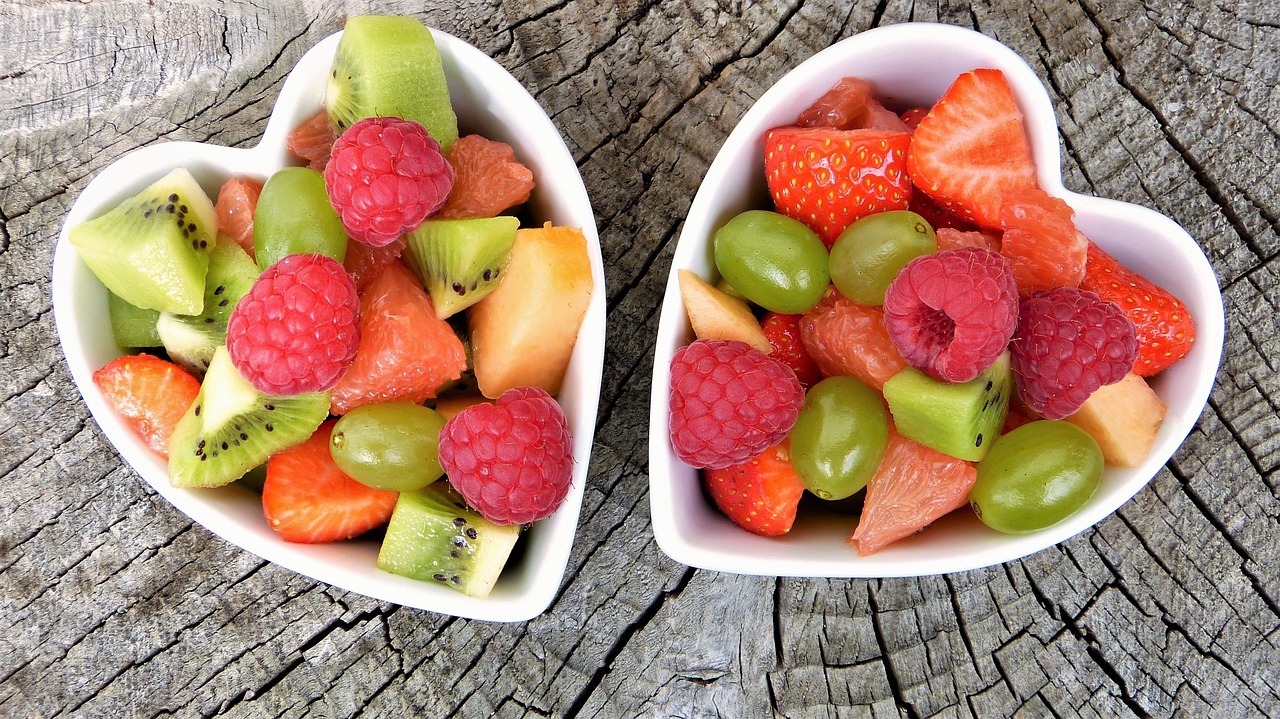
When it comes to keeping our furry friends happy and healthy, nutrition plays a pivotal role. Just like humans, pets require a variety of essential nutrients to thrive. These nutrients serve as the building blocks for their bodies, ensuring they grow strong, maintain energy levels, and enjoy a long, vibrant life. So, what exactly are these essential nutrients, and why are they so important? Let's dive in!
First off, we have proteins, which are often referred to as the body's building blocks. Proteins are crucial for the development and repair of tissues, and they play a key role in the production of enzymes and hormones. Without adequate protein, pets can suffer from muscle loss, weakened immune systems, and overall poor health. It's essential to choose high-quality protein sources, as they can significantly enhance your pet's energy levels and contribute to their longevity.
Next on the list are fats. Now, I know what you might be thinking: "Fats? Aren't those bad for my pet?" Not all fats are created equal! Healthy fats, such as omega-3 and omega-6 fatty acids, are vital for energy and nutrient absorption. They also promote healthy skin and a shiny coat, which are signs of a well-nourished pet. Think of fats as a source of energy that keeps your pet's engine running smoothly.
Then we have vitamins and minerals, which are essential for various bodily functions. Vitamins help in processes like vision, skin health, and immune function, while minerals such as calcium and phosphorus are crucial for strong bones and teeth. A balanced diet should include a variety of these nutrients to ensure your pet's overall well-being. For instance, vitamin E acts as an antioxidant, protecting cells from damage, while B vitamins are essential for energy metabolism.
To make it easier to understand the different essential nutrients, here’s a quick breakdown:
| Nutrient | Function | Sources |
|---|---|---|
| Proteins | Muscle development and repair | Meat, fish, eggs, legumes |
| Fats | Energy and nutrient absorption | Fish oil, flaxseed, chicken fat |
| Vitamins | Support metabolic processes | Fruits, vegetables, fortified foods |
| Minerals | Bone health and enzyme function | Meat, dairy, leafy greens |
Understanding these essential nutrients can empower pet owners to make informed dietary choices that promote longevity and vitality in their furry companions. It's not just about filling their bowls; it's about ensuring that every bite counts towards a healthier, happier life. Remember, a well-balanced diet tailored to your pet's individual needs is the key to unlocking their full potential!
- What are the signs of a well-nourished pet? A well-nourished pet typically has a shiny coat, healthy skin, bright eyes, and maintains a healthy weight.
- Can I feed my pet homemade food? Yes, but it's crucial to ensure that the homemade diet is balanced and meets all of your pet's nutritional needs.
- How do I know if my pet is getting enough protein? Consult with your veterinarian to determine the appropriate protein levels based on your pet's age, size, and activity level.
Proteins and Their Benefits
Proteins are often hailed as the building blocks of life, and when it comes to our furry friends, this statement couldn't be more accurate. Just like humans, pets require proteins for a multitude of vital functions. They play a crucial role in muscle development, tissue repair, and even the production of hormones and enzymes. Imagine proteins as the construction crew that builds and maintains your pet's body, ensuring everything runs smoothly. Without adequate protein intake, your pet may experience weakness, lethargy, and a host of health issues.
High-quality protein sources not only enhance a pet's energy levels but also support their overall well-being. Think of protein as the fuel that powers your pet's engine; the better the fuel, the better the performance. When pets receive the right amount of protein, they tend to be more active, playful, and happy. This increased vitality can significantly contribute to a longer, healthier life.
Now, it's essential to recognize that not all proteins are created equal. The source of protein can greatly influence its quality and digestibility. For instance, animal proteins such as chicken, beef, and fish are generally more complete in terms of amino acids compared to plant proteins like soy or peas. However, plant proteins can still play a role in a balanced diet, especially for pets with specific dietary restrictions. Making informed choices about protein sources can be a game-changer for your pet's health.
When considering your pet's protein needs, it's also vital to take their age into account. Puppies and kittens require higher protein levels for growth and development, while adult pets need a balanced amount to maintain their health. Senior pets, on the other hand, may benefit from easily digestible protein sources to support their aging bodies. Understanding these varying requirements is crucial in ensuring your pet receives the appropriate nutrition at every life stage.
| Life Stage | Recommended Protein Level |
|---|---|
| Puppies/Kittens | 22-32% of total diet |
| Adult Dogs/Cats | 18-25% of total diet |
| Senior Pets | 15-20% of total diet |
In conclusion, incorporating the right amount and type of protein into your pet's diet is essential for their growth, energy, and overall health. By prioritizing high-quality protein sources and understanding their unique dietary needs, you can help your furry companion lead a longer, happier life.
- What are the best protein sources for pets? High-quality animal proteins like chicken, beef, and fish are excellent choices, but some pets may also benefit from plant-based proteins.
- How much protein does my pet need? Protein requirements vary by age and activity level. Consult your veterinarian for personalized recommendations.
- Can too much protein be harmful? Yes, excessive protein can lead to health issues, especially in pets with kidney problems. It's important to balance their diet.
Animal vs. Plant Proteins
When it comes to choosing the right protein source for your furry friend, the debate between animal proteins and plant proteins can be quite the conundrum. Both types of proteins have their unique benefits and drawbacks, and understanding these can help you make an informed decision for your pet's dietary needs. Animal proteins, such as chicken, beef, and fish, are often considered the gold standard in pet nutrition. They provide all the essential amino acids that pets require for optimal health and development. These proteins are typically more digestible and can lead to better nutrient absorption, which is crucial for maintaining energy levels and muscle mass.
On the other hand, plant proteins, found in ingredients like peas, lentils, and soy, can also play a significant role in a pet's diet. While they tend to be lower in certain essential amino acids, they are often rich in fiber and other nutrients that can promote digestive health. However, it’s essential to ensure that plant-based diets are well-balanced and supplemented with the necessary amino acids to avoid deficiencies. Here’s a quick comparison to illustrate the differences:
| Aspect | Animal Proteins | Plant Proteins |
|---|---|---|
| Protein Quality | High-quality, complete amino acids | Incomplete amino acids; requires careful combination |
| Digestibility | Highly digestible | Varies; generally less digestible |
| Nutritional Benefits | Rich in essential nutrients (e.g., omega-3 fatty acids) | High in fiber and antioxidants |
| Environmental Impact | Higher carbon footprint | Lower carbon footprint |
Ultimately, the choice between animal and plant proteins should depend on your pet's specific needs, age, and health condition. For instance, puppies and kittens may thrive on diets rich in animal proteins to support their rapid growth and energy needs, while older pets might benefit from a balanced mix that includes both types to maintain their health and vitality. It’s always a good idea to consult with your veterinarian to determine the best protein sources for your pet's unique dietary requirements.
- Can I feed my pet a vegetarian diet? While some pets can thrive on a vegetarian diet, it’s crucial to ensure it is well-balanced and meets all their nutritional needs.
- What are the signs my pet is not getting enough protein? Look for signs like lethargy, poor coat condition, and muscle loss.
- Are there any risks associated with high protein diets? Yes, excessive protein can lead to kidney strain, especially in pets with pre-existing health conditions.
Protein Requirements by Age
When it comes to our furry friends, understanding their protein requirements is essential for ensuring they lead healthy and happy lives. Just like humans, pets have different nutritional needs at various stages of their lives. Puppies, adults, and senior pets all require different levels of protein to support their unique growth and health needs. For instance, puppies are in a critical growth phase, needing a higher percentage of protein in their diet to support their developing muscles and tissues. Generally, puppies require around 22-32% protein in their diet, depending on their breed and size.
As pets transition into adulthood, their protein needs shift. Adult dogs typically require about 18-25% protein, while adult cats need around 26-30%. This reduction in protein helps maintain their energy levels without leading to unnecessary weight gain. It’s important to note that not all adult pets have the same requirements; factors such as activity level, breed, and overall health can influence their specific protein needs.
Now, let’s not forget our senior pets! As dogs and cats age, their metabolism slows down, and their bodies may require less protein than when they were younger. However, it's crucial to ensure that older pets still receive enough protein to maintain muscle mass and support their immune system. Generally, senior pets should consume about 15-20% protein, but this can vary based on their health status. For example, pets with specific health issues may require higher protein levels to combat muscle loss.
| Life Stage | Recommended Protein Intake |
|---|---|
| Puppies | 22-32% |
| Adult Dogs | 18-25% |
| Adult Cats | 26-30% |
| Senior Pets | 15-20% |
In summary, understanding the varying protein requirements by age is vital for pet owners. It allows them to tailor their pet's diet to ensure they receive the right amount of this essential nutrient at each life stage. By doing so, we can help our beloved pets enjoy a longer, healthier life filled with energy and vitality.
- What should I do if my pet refuses to eat protein-rich food?
Consider consulting your veterinarian to rule out any health issues and explore alternative protein sources or preparation methods that may be more appealing to your pet. - Can too much protein be harmful to my pet?
Yes, excessive protein can lead to health problems, especially in pets with kidney issues. Always consult with a veterinarian to determine the appropriate protein level for your pet. - How can I tell if my pet is getting enough protein?
Signs that your pet is receiving adequate protein include a shiny coat, healthy skin, and good energy levels. If you notice any changes in these areas, it may be worth reviewing their diet.
Fats: The Energy Source
When it comes to our furry companions, fats are often misunderstood. Many pet owners think of fats as something to avoid, but the truth is that they are a vital component of a pet's diet. Just like humans, pets require a certain amount of fat to thrive. In fact, fats serve as an essential energy source, providing more than twice the energy per gram compared to proteins and carbohydrates. This means that a small amount of fat can go a long way in fueling your pet's daily activities, from playful romps in the yard to cozy naps on the couch.
Healthy fats are not just about energy; they also play a crucial role in nutrient absorption. Certain vitamins, such as A, D, E, and K, are fat-soluble, meaning they need fat to be effectively absorbed by the body. Without adequate fat in their diet, pets may struggle to absorb these essential nutrients, which can lead to health issues over time. Think of fats as the delivery trucks that transport these important vitamins to their destinations within your pet's body.
Moreover, fats contribute significantly to skin and coat health. Omega-3 and Omega-6 fatty acids, in particular, are known for their anti-inflammatory properties and can help maintain a shiny, healthy coat. A diet rich in these healthy fats can also alleviate skin conditions, reduce shedding, and promote overall well-being. Imagine your pet strutting around with a coat so shiny that it reflects the sun—now that’s a sight worth striving for!
It's important to note, however, that not all fats are created equal. While healthy fats are essential, trans fats and excessive saturated fats can lead to obesity and other health problems. As responsible pet owners, it's crucial to choose high-quality sources of fat for our pets. Here’s a quick look at some healthy fat sources you might consider:
- Fish oil - rich in Omega-3 fatty acids, great for skin and coat health.
- Flaxseed oil - another excellent source of Omega-3s.
- Chicken fat - provides energy and enhances the palatability of pet food.
- Canola oil - a good source of Omega-6 fatty acids.
In conclusion, incorporating the right types of fats into your pet's diet is essential for their energy levels, nutrient absorption, and overall health. Just remember, moderation is key! By choosing quality fat sources and balancing them with proteins and carbohydrates, you can help your pet lead a long, healthy, and vibrant life.
- How much fat should my pet's diet contain? - The ideal fat content can vary based on your pet's age, size, and activity level. Generally, a diet with 8-15% fat is suitable for most adult pets.
- Can I use human oils in my pet's food? - Yes, many human oils like olive oil and coconut oil can be beneficial in moderation. However, always consult your veterinarian before making changes to your pet's diet.
- What are the signs of a fat deficiency in pets? - Symptoms may include dry skin, dull coat, and poor growth. If you suspect a deficiency, consult your vet for advice.
- Are there any fats I should avoid? - Yes, trans fats and excessive saturated fats should be avoided as they can lead to health problems like obesity and heart disease.
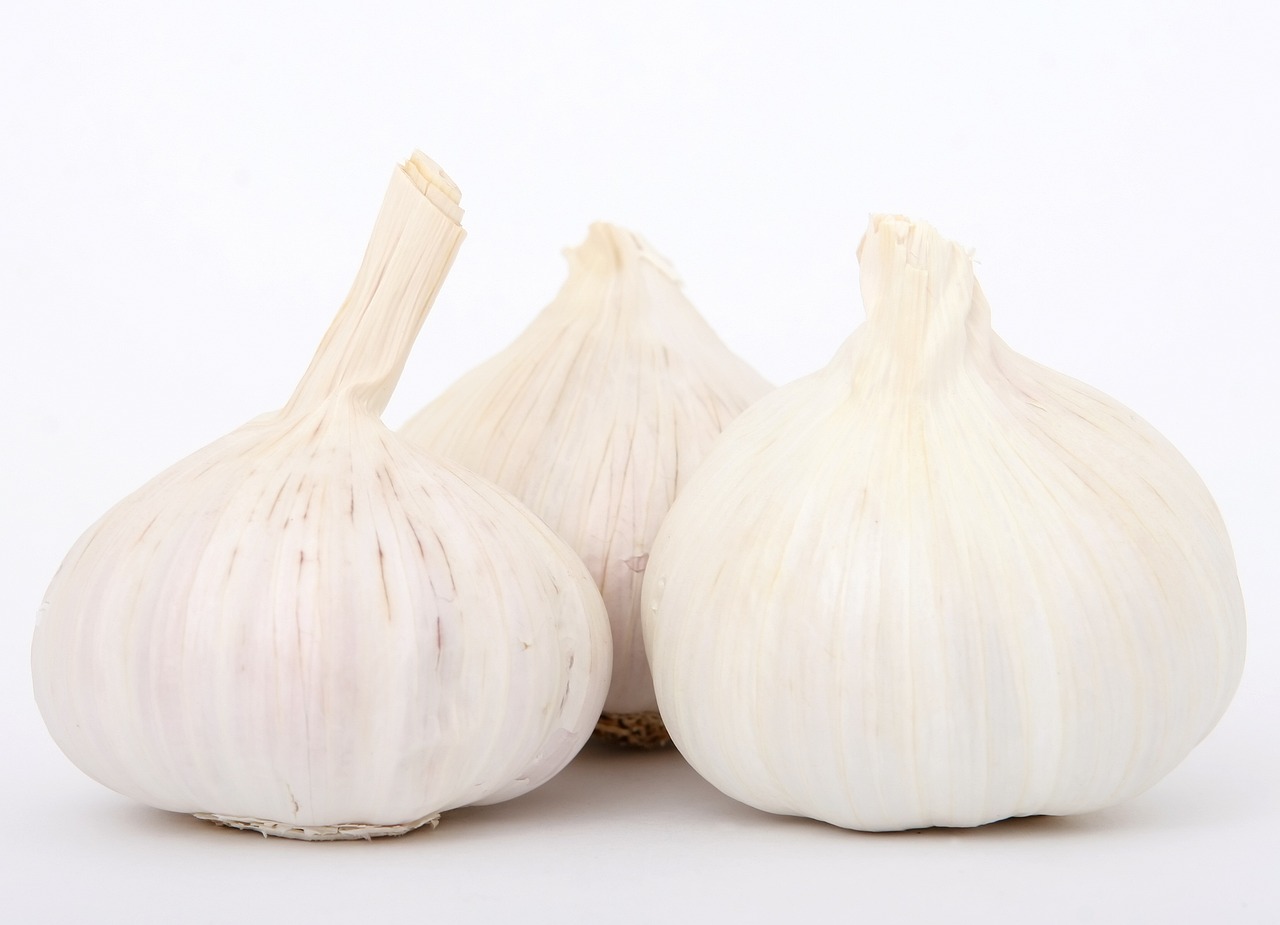
The Importance of Hydration
When it comes to our beloved pets, hydration is often overlooked, yet it plays a critical role in their overall health and well-being. Just like humans, pets need water to survive, thrive, and live a long life. Water is not just a basic necessity; it is the essence of life. It aids in digestion, nutrient absorption, and even regulates body temperature. Imagine trying to run a marathon without water – it’s a recipe for disaster! The same goes for our furry friends. Without adequate hydration, they can face serious health issues that could cut their lives short.
Understanding the importance of hydration involves recognizing how it affects various bodily functions. For instance, water helps to transport nutrients throughout the body, flush out toxins, and maintain healthy skin and coat. A well-hydrated pet is often more active, playful, and alert, making them a joy to be around. On the flip side, dehydration can lead to a host of problems, including kidney issues, urinary tract infections, and even heatstroke during those hot summer days. So, how can we ensure that our pets are getting enough water?
One of the simplest ways to promote proper hydration is by ensuring that fresh, clean water is always available. You might be surprised to learn that pets can be quite picky about their water sources. Some might prefer drinking from a bowl, while others may be drawn to running water. That's where water fountains come into play. These fountains not only provide a continuous flow of fresh water but also entice pets to drink more. Just like a bubbling brook in nature, the sound and movement of water can be irresistible to our furry companions.
In addition to providing fresh water, it's essential to recognize the signs of dehydration. Here are some key indicators to look out for:
- Dry gums: If your pet's gums are sticky or dry, it may be a sign that they are not drinking enough water.
- Loss of skin elasticity: Gently pinch the skin on the back of your pet's neck. If it doesn't spring back quickly, dehydration may be an issue.
- Lethargy: If your pet seems unusually tired or less active than usual, it could be due to dehydration.
- Sunken eyes: This can be a more severe sign of dehydration and should be addressed immediately.
Being proactive about hydration can lead to a longer, healthier life for your pet. Make it a habit to monitor their water intake, especially during hot weather or after exercise. You might even consider adding water to their food, especially if they are on a dry kibble diet. This can not only enhance their hydration but also make mealtime more enjoyable.
In conclusion, hydration is not just an afterthought; it's a fundamental aspect of pet care that deserves our attention. By ensuring that our pets are well-hydrated, we are investing in their health and longevity. Remember, a happy and hydrated pet is a healthy pet!
Q: How much water should my pet drink daily?
A: The general rule of thumb is that pets should drink about 1 ounce of water per pound of body weight each day. However, this can vary based on factors like activity level, diet, and weather conditions.
Q: What can I do if my pet refuses to drink water?
A: If your pet is reluctant to drink, try offering flavored water (like low-sodium chicken broth) or using a pet water fountain to encourage them. You can also add water to their food to increase their overall intake.
Q: Are there any signs that my pet is dehydrated?
A: Yes, signs of dehydration include dry gums, loss of skin elasticity, lethargy, and sunken eyes. If you notice these symptoms, it’s essential to consult a veterinarian.
Signs of Dehydration
Recognizing the in your beloved pets is crucial for their health and longevity. Just like humans, pets can suffer from dehydration, which can lead to serious health issues if not addressed promptly. So, how can you tell if your furry friend is not getting enough water? Here are some key indicators to watch for:
First off, observe their drinking habits. If your pet suddenly stops drinking water or drinks significantly less than usual, that’s a red flag. Another common sign is dry gums; when you gently lift your pet's lip, their gums should appear moist and pink. If they look dry and sticky, it’s time to take action.
Additionally, you can perform a simple skin elasticity test. Gently pinch the skin on the back of your pet's neck and release it. If the skin snaps back quickly, they are likely well-hydrated. However, if it takes a moment to return to its normal position, your pet may be dehydrated.
Other symptoms to keep an eye on include:
- Loss of appetite: If your pet suddenly shows little interest in food, it could be a sign of dehydration.
- Lethargy: A dehydrated pet may seem more tired than usual and less inclined to play.
- Sunken eyes: If your pet’s eyes appear sunken or dull, it could indicate a lack of hydration.
It's essential to be vigilant about these signs, as early detection can lead to timely interventions. If you notice any of these symptoms, it’s important to consult your veterinarian immediately. Remember, hydration is key to ensuring your pet lives a long, healthy life!
Q: How much water should my pet drink daily?
A: The amount of water your pet needs can vary based on their size, diet, and activity level. A general rule of thumb is that pets should drink about 1 ounce of water per pound of body weight each day.
Q: What can I do to encourage my pet to drink more water?
A: You can encourage your pet to drink more by providing fresh water frequently, using a pet water fountain, or adding water to their food. Some pets may also enjoy ice cubes or ice chips as a fun way to hydrate!
Q: Are certain pets more prone to dehydration?
A: Yes, certain pets, such as older animals, those with certain health conditions, or pets who are very active, may be more susceptible to dehydration. Always monitor their water intake closely.
Encouraging Water Intake
Keeping our furry friends well-hydrated is crucial for their health and longevity. Just like humans, pets need a constant supply of fresh water to thrive. But how can we encourage them to drink more? First, it’s essential to understand that pets can be quite particular about their water sources. Some may prefer running water over still water, which is where a pet water fountain can work wonders. These fountains not only provide a continuous flow of fresh water but also entice pets to drink more often, mimicking a natural water source they might find in the wild.
Another effective strategy is to change the water frequently. Pets are more likely to drink if their water bowl is always filled with clean, fresh water. You might be surprised how many pets will ignore a bowl that has been sitting out for too long, even if it’s still technically full. Additionally, consider placing multiple water bowls around your home; sometimes, pets simply forget where the water is located!
Have you ever thought about adding flavor to your pet’s water? A splash of low-sodium chicken or beef broth can make water more appealing to your pet. Just be sure to use broth that doesn’t contain harmful ingredients like onions or garlic, which can be toxic to pets. You can also try offering ice cubes made from broth or even frozen fruits like blueberries for a fun and tasty treat that encourages hydration.
Furthermore, incorporating wet food into your pet's diet can significantly boost their water intake. Canned food typically contains a higher moisture content compared to dry kibble, providing an excellent way to keep your pet hydrated while also delivering essential nutrients. If your pet is hesitant to drink, consider mixing a bit of water into their dry food to create a stew-like consistency—this can make mealtime more exciting and hydrating!
Lastly, it’s vital to monitor your pet’s hydration levels. Signs of dehydration can include dry gums, lethargy, and decreased skin elasticity. If you notice any of these symptoms, it’s crucial to consult your veterinarian immediately. Remember, encouraging your pet to drink water isn’t just about quenching their thirst; it’s about promoting their overall health and ensuring they live a long, happy life.
- How much water should my pet drink daily? - Generally, pets should drink about 1 ounce of water per pound of body weight daily. However, this can vary based on factors like activity level and diet.
- What are the signs of dehydration in pets? - Look for dry mouth, lethargy, and a lack of skin elasticity. If you pinch the skin on the back of their neck, it should spring back quickly.
- Can I give my pet flavored water? - Yes, as long as it’s safe and doesn’t contain harmful ingredients. Low-sodium broth can be a great option!
- Is wet food better for hydration than dry food? - Yes, wet food has a higher moisture content, which can help keep your pet hydrated.

Choosing the Right Pet Food
When it comes to selecting the right food for your furry friend, it can feel like navigating a maze. With so many options available, how do you know which one is best? The truth is, choosing the right pet food is not just about grabbing the first bag you see at the store; it requires a bit of research and understanding of your pet's specific needs. A well-balanced diet can significantly impact your pet's health and longevity, making it essential to invest time in this decision.
One of the first steps in choosing the right pet food is to understand ingredient quality. Not all pet foods are created equal, and the ingredient list can tell you a lot about the nutritional value of the food. Look for high-quality protein sources as the first ingredient, such as chicken, beef, or fish. Avoid foods with vague terms like "meat by-products" or "animal digest," which can indicate lower quality. Additionally, it's important to check for the presence of whole grains, fruits, and vegetables, which can provide necessary vitamins and minerals.
Another crucial aspect to consider is the nutritional value of the food. Pet foods are often formulated to meet the specific dietary requirements of different life stages, such as puppies, adults, and senior pets. For example, puppies need more protein and calories for growth, while senior pets may require a diet lower in calories and higher in fiber to support their changing metabolism. Always consult your veterinarian to tailor your pet's diet to their specific age, weight, and health needs.
To help you make an informed decision, consider the following factors when choosing pet food:
- Life Stage: Ensure the food is appropriate for your pet's age and lifestyle.
- Health Conditions: If your pet has specific health issues, look for diets formulated to address those conditions.
- Brand Reputation: Choose brands that are well-known and have a good track record for quality and safety.
- Feeding Guidelines: Follow the feeding guidelines on the package, adjusting based on your pet's activity level and weight.
Additionally, it's worthwhile to read pet food labels carefully. The label should provide a guaranteed analysis of the nutrients contained in the food, including minimum percentages of crude protein and fat, as well as maximum percentages of fiber and moisture. Understanding these figures can help you compare different brands and make a more informed choice. For instance, if you're looking at two different brands, you might find that one has a higher protein content, which could be beneficial for an active dog.
Lastly, the debate between homemade vs. commercial diets is one that many pet owners face. Homemade diets can be tailored to your pet's specific needs, but they require careful planning to ensure they are nutritionally complete. On the other hand, commercial diets are convenient and often formulated by experts, but not all brands are created equal. Weigh the pros and cons of each option and consider consulting with your veterinarian to find the best solution for your pet.
1. How do I know if the pet food I’m buying is good quality?
Check the ingredient list for high-quality protein sources and avoid foods with vague terms. Look for brands that provide a guaranteed analysis of their nutritional content.
2. Should I choose grain-free pet food?
Grain-free diets are not necessary for all pets and can sometimes lead to nutritional deficiencies. Consult your veterinarian to determine if a grain-free diet is appropriate for your pet.
3. Can I feed my pet homemade food?
Yes, but be sure to consult with a veterinarian or a pet nutritionist to ensure the diet is balanced and meets all of your pet's nutritional needs.
4. How often should I change my pet's food?
If you change your pet's food, do so gradually over a week to prevent digestive upset. Regularly assess their health and consult your veterinarian for advice on dietary changes.
Reading Pet Food Labels
When it comes to ensuring your furry friend receives the best nutrition, understanding how to read pet food labels is absolutely crucial. Just like you wouldn’t blindly trust a restaurant menu without knowing the ingredients, the same goes for your pet's food. Pet food labels can be a treasure trove of information, but they can also be quite overwhelming at first glance. So, let’s break it down into bite-sized pieces!
First and foremost, the ingredient list is where you should start. Ingredients are listed in descending order by weight, meaning the first few items are the most significant. Ideally, you want to see high-quality protein sources at the top of this list. Look for ingredients like chicken, beef, or fish rather than vague terms like “meat by-products.” This gives you a clearer idea of what your pet is actually consuming.
Next up is the guaranteed analysis. This section provides a breakdown of the nutrient content in the food, including percentages of protein, fat, fiber, and moisture. While it’s essential to know these figures, they should not be the only deciding factor. For example, a food might have high protein content, but if the protein source is low quality, it won’t provide the same benefits as a food with slightly lower protein but better quality ingredients.
Also, keep an eye out for additional nutrients and supplements that may be included in the formula. Many pet foods are fortified with vitamins and minerals to promote overall health. Look for those that are beneficial for your pet’s specific needs. For instance, if your pet is prone to joint issues, you might want to choose a food enriched with glucosamine and chondroitin.
To further aid your understanding, here’s a quick table summarizing the key components you should look for on pet food labels:
| Component | What to Look For |
|---|---|
| Ingredient List | High-quality protein sources at the top |
| Guaranteed Analysis | Balanced percentages of protein, fat, and fiber |
| Additional Nutrients | Vitamins and minerals for specific health needs |
Finally, don’t forget to check for any certifications or assurances on the packaging. Look for labels that indicate the food meets standards set by organizations like the Association of American Feed Control Officials (AAFCO). This ensures that the food is nutritionally adequate and safe for your pet.
In conclusion, reading pet food labels is an essential skill that empowers you to make informed choices about your pet’s diet. By paying attention to ingredients, guaranteed analysis, additional nutrients, and certifications, you can ensure your furry friend receives the balanced nutrition they need to thrive. Remember, just like you wouldn’t compromise on your own health, your pet deserves the same level of care and attention!
- What should I look for in a pet food label? Look for high-quality protein sources, a balanced guaranteed analysis, and beneficial additional nutrients.
- Are all pet foods regulated? Yes, but it’s essential to check for AAFCO certification to ensure nutritional adequacy.
- Can I switch my pet's food suddenly? It’s best to transition gradually to avoid digestive upset.
Homemade vs. Commercial Diets
This article explores how proper nutrition impacts the lifespan and overall health of pets, emphasizing the importance of a balanced diet tailored to individual needs.
A balanced diet is crucial for pets, providing essential nutrients that support their growth, energy levels, and overall health, which can significantly extend their lifespan.
Understanding essential nutrients, including proteins, fats, vitamins, and minerals, helps pet owners make informed dietary choices that promote longevity and vitality in their furry companions.
Proteins are vital for muscle development and repair. High-quality protein sources can enhance a pet's energy levels and support healthy bodily functions, contributing to a longer life.
Comparing animal and plant proteins reveals their unique benefits and drawbacks, helping owners choose the best protein sources for their pets' specific dietary needs.
Different life stages require varying protein levels; understanding these needs ensures pets receive adequate nutrition for optimal growth and health throughout their lives.
Fats are essential for energy and nutrient absorption. Healthy fats contribute to a pet's skin and coat health, enhancing their overall well-being and longevity.
Hydration plays a critical role in a pet's health. Ensuring pets drink enough water supports vital bodily functions and helps prevent various health issues, promoting longevity.
Recognizing the signs of dehydration in pets is crucial. Early detection can lead to timely interventions, ensuring pets maintain optimal health and longevity.
Implementing strategies to encourage pets to drink more water, such as providing fresh water frequently and using water fountains, can significantly improve their hydration levels.
Selecting the appropriate pet food involves understanding ingredient quality and nutritional value, which are essential for supporting longevity and preventing health issues.
Learning to read and interpret pet food labels empowers owners to make informed choices, ensuring their pets receive balanced nutrition tailored to their specific needs.
When it comes to choosing the best diet for your pet, the debate between homemade and commercial diets is a hot topic among pet owners. Both options have their merits and challenges, and understanding these can help you make the best decision for your furry friend. A homemade diet allows you to control the ingredients, ensuring that your pet gets fresh, high-quality food tailored to their specific health needs. This can be particularly beneficial for pets with allergies or sensitivities to certain ingredients commonly found in commercial foods.
On the flip side, commercial diets are often formulated by veterinarians and pet nutritionists, providing a convenient option that meets the basic nutritional requirements of pets. Many commercial pet foods are designed to be complete and balanced, which means they contain all the necessary nutrients in the right proportions. However, not all commercial diets are created equal. Some can contain fillers, artificial additives, and low-quality ingredients that may not be beneficial for your pet's health.
Here’s a quick comparison of the two options:
| Aspect | Homemade Diets | Commercial Diets |
|---|---|---|
| Control over Ingredients | High | Low |
| Nutritional Balance | Variable (requires research) | Typically balanced |
| Convenience | Time-consuming | Convenient |
| Cost | Can be higher | Varies widely |
Ultimately, the choice between homemade and commercial diets should be based on your pet's individual health needs, your lifestyle, and your budget. Consulting with a veterinarian or a pet nutritionist can provide valuable insights and help you tailor the best diet for your beloved companion.
- What should I include in a homemade diet for my pet? Focus on proteins, healthy fats, carbohydrates, vitamins, and minerals, ensuring a balanced mix.
- Are commercial diets safe for all pets? Most commercial diets are safe, but it’s essential to choose high-quality brands and check for any allergens.
- Can I mix homemade and commercial diets? Yes, but it’s best to consult a vet to ensure your pet gets balanced nutrition.
- How do I know if my pet is getting enough nutrients? Regular vet check-ups and monitoring your pet's health can help determine if their diet is adequate.
Frequently Asked Questions
- How does nutrition affect my pet's lifespan?
Nutrition plays a crucial role in your pet's overall health and longevity. A balanced diet provides essential nutrients that support growth, energy levels, and bodily functions, which can significantly extend your furry friend's life. Think of it like fueling a car; the better the fuel, the longer and smoother the ride!
- What are the essential nutrients my pet needs?
Pets require a mix of proteins, fats, vitamins, and minerals to thrive. These nutrients help maintain healthy muscles, energy levels, and proper organ function. Just like us, pets need a variety of foods to get everything they need for a happy, healthy life!
- How do I choose the right protein for my pet?
Choosing the right protein depends on your pet's specific needs. Animal proteins are typically more complete and beneficial for muscle development, while plant proteins can be a good supplement. It’s important to consider your pet’s age, activity level, and any dietary restrictions they may have.
- What signs should I look for to detect dehydration in my pet?
Common signs of dehydration include dry gums, lethargy, loss of skin elasticity, and reduced appetite. If you notice any of these symptoms, it’s essential to encourage your pet to drink more water or consult your veterinarian for advice.
- How can I encourage my pet to drink more water?
To boost your pet's hydration, try offering fresh water frequently, using a pet water fountain, or adding water to their food. You can also provide ice cubes or ice chips as a fun treat! Keeping them hydrated is key to their health and longevity.
- What should I look for on pet food labels?
When reading pet food labels, pay attention to the ingredient list and nutritional information. Look for high-quality ingredients, appropriate protein levels, and the absence of fillers or artificial additives. Understanding these details helps ensure your pet gets the balanced nutrition they need.
- Is homemade pet food better than commercial diets?
Both homemade and commercial diets have their pros and cons. Homemade diets can be tailored to your pet’s specific needs, but they require careful planning to ensure balanced nutrition. Commercial diets are convenient and often formulated to meet nutritional standards. It’s essential to choose what works best for you and your pet.



